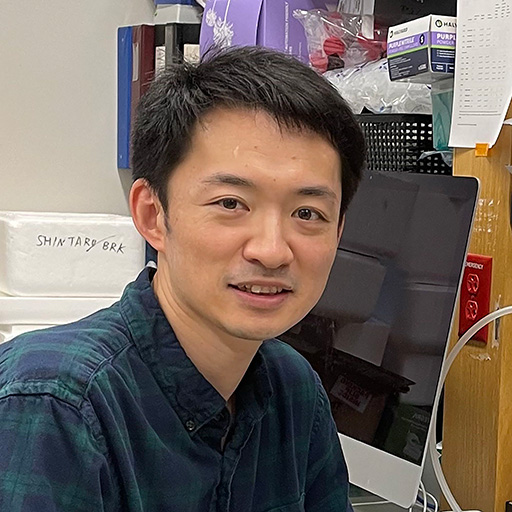Association and Functional Characterization of Long Non-Coding RNAs (lncRNAs) in Age-Related Macular Degeneration

About the Research Project
Program
Award Type
Standard
Award Amount
$120,000
Active Dates
July 01, 2013 - June 30, 2016
Grant ID
M2013122
Acknowledgement
Goals
The function of long non-coding RNA (lncRNA) in the genome and their role in biological processes and disease is not well studied even though some lncRNA are known to be associated with neurological diseases. Dr. Chavali’s team proposes to sequence the total retina and retinal pigment epithelium (RPE) tissue transcriptome (the total collection of RNAs that are expressed within cells at that point in time) from normal and age-related macular degeneration (AMD) donor eyes. Analysis of these sequences will reveal the differentially expressed (DE) lncRNAs and messenger RNAs (mRNAs) that are relevant to AMD and expressed in the retina and RPE/choroid. The team intends to characterize the role of DE lncRNAs in AMD and understand how lncRNAs potentially influence the development of AMD. The outcome of this project will provide novel pathways to understand what is involved with the initiation and progression of AMD. Defining the expression changes of lncRNAs in AMD may lead to the development of new biomarkers and therapies.
Summary
When this study is complete, Dr. Chavali’s team will be able to provide novel molecular tools and pathways that will provide information to better understand what causes AMD. For the very first time, understanding the role and function of long non-coding RNA (lncRNAs) which are associated with AMD might lead to the development of novel therapeutic agents that target these pathways. Despite the increasing interest in the study of lncRNAs in a host of biological processes and diseases, this is the first research proposed to identify and characterize the relation of lncRNAs with AMD. Dr. Chavali’s study will characterize the differentially expressed (DE) lncRNAs in AMD which may lead to the development of new biomarkers and therapy.
This study will use eye tissues from eyes generously donated for medical research to the Alabama Eye Bank, which were collected using funds from the Arnold and Mabel Beckman Institute of Macular Research (BIMR) grant to Drs. Christine A. Curcio and Dwight Stambolian. The first aim of Dr. Chavali’s study involves analyzing the sequence of the transcriptome isolated from normal and AMD donor eyes, to reveal the DE lncRNAs and mRNAs in the retina and RPE/choroid tissues. This will be the first time that anyone has attempted to study the role of non-coding elements in the eye and understand if they play a role in causing AMD.
In the second aim, Dr. Chavali’s team intends to characterize the function of these DE lncRNAs to understand their association with AMD. The sequences of the lncRNAs obtained above will be analyzed by aligning against the total human genome (hg19) database. The team will use publically available bioinformatics software and a home-brewed bioinformatics computer analysis pipeline to annotate the DE lncRNA/mRNA into gene expression clusters. Methods will be used to understand the role of the DE lncRNAs in a number of pathways that are important for normal function and maintenance of the retina and RPE/choroid.
In the team’s third aim, they propose to functionally characterize five DE lncRNA that have a significantly altered expression in AMD. They propose to study where the DE lncRNA is located, both overexpress and completely diminish their expressions, and analyze their function both in vitro (cell line cultures) and in vivo (animals/tissues) to study and understand how lncRNAs potentially influence the development of AMD.
A better understanding of how the differential regulation of lncRNAs influence AMD might help to alter the way treatments are managed and/or delay the onset of AMD, leading to an improved quality of life for the elderly. Dr. Chavali’s team is extremely excited to study the role of these lncRNAs in causing AMD, and cannot sufficiently express their gratitude to those willing to support this work.
Related Grants
Macular Degeneration Research
The Novel Role of an Intracellular Nuclear Receptor in AMD Pathogenesis
Active Dates
July 01, 2024 - June 30, 2026

Principal Investigator
Neetu Kushwah, PhD
Current Organization
Boston Children’s Hospital
Macular Degeneration Research
Exploring How NRF2 Protein Reduces RPE Cell Damage by Cigarette Smoke
Active Dates
July 01, 2024 - June 30, 2026

Principal Investigator
Krishna Singh, PhD
Current Organization
Johns Hopkins University School of Medicine
Macular Degeneration Research
The Development of a Transplant-Independent Therapy for RPE Dysfunction
Active Dates
July 01, 2024 - June 30, 2026

Principal Investigator
Shintaro Shirahama, MD, PhD
Current Organization
Schepens Eye Research Institute of Massachusetts Eye and Ear



